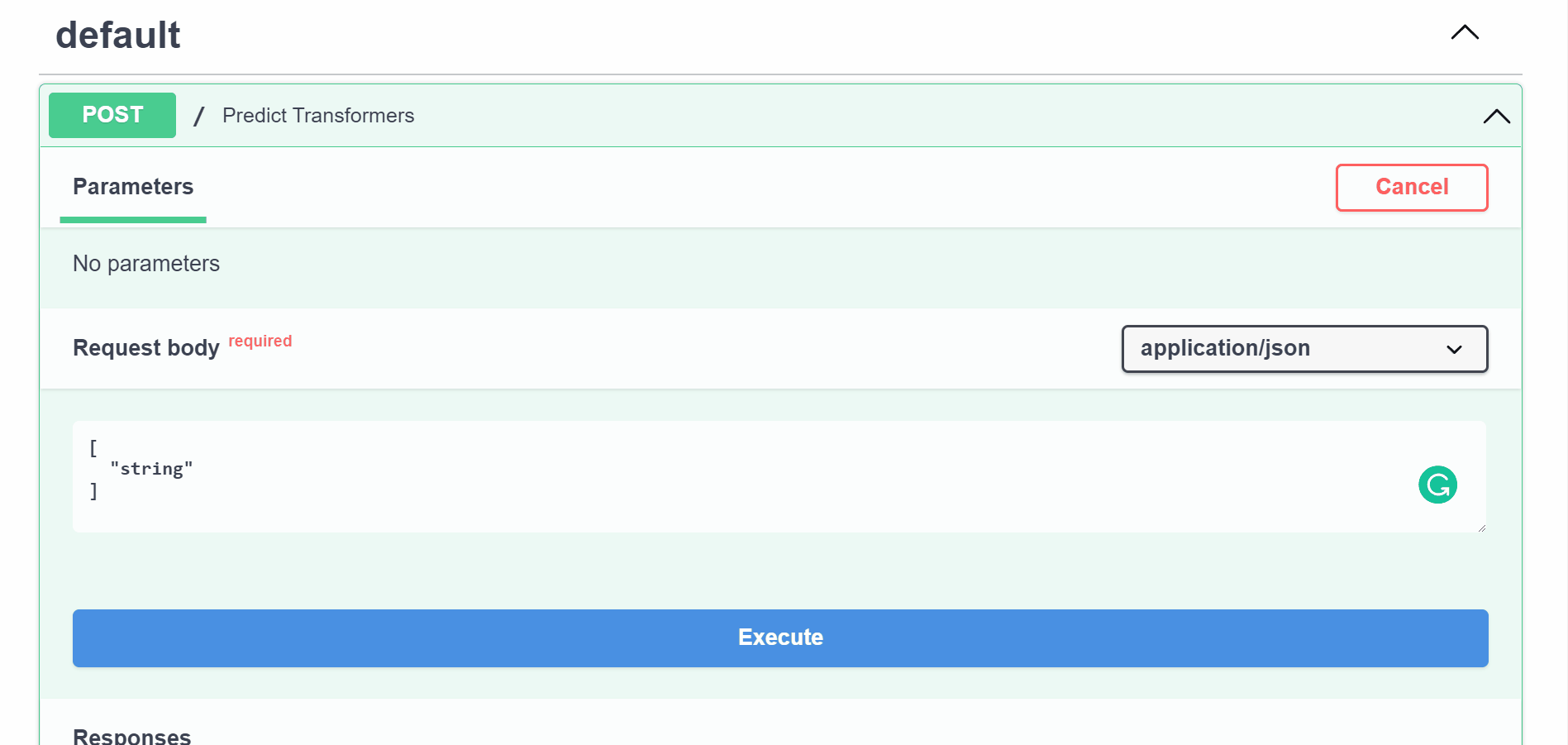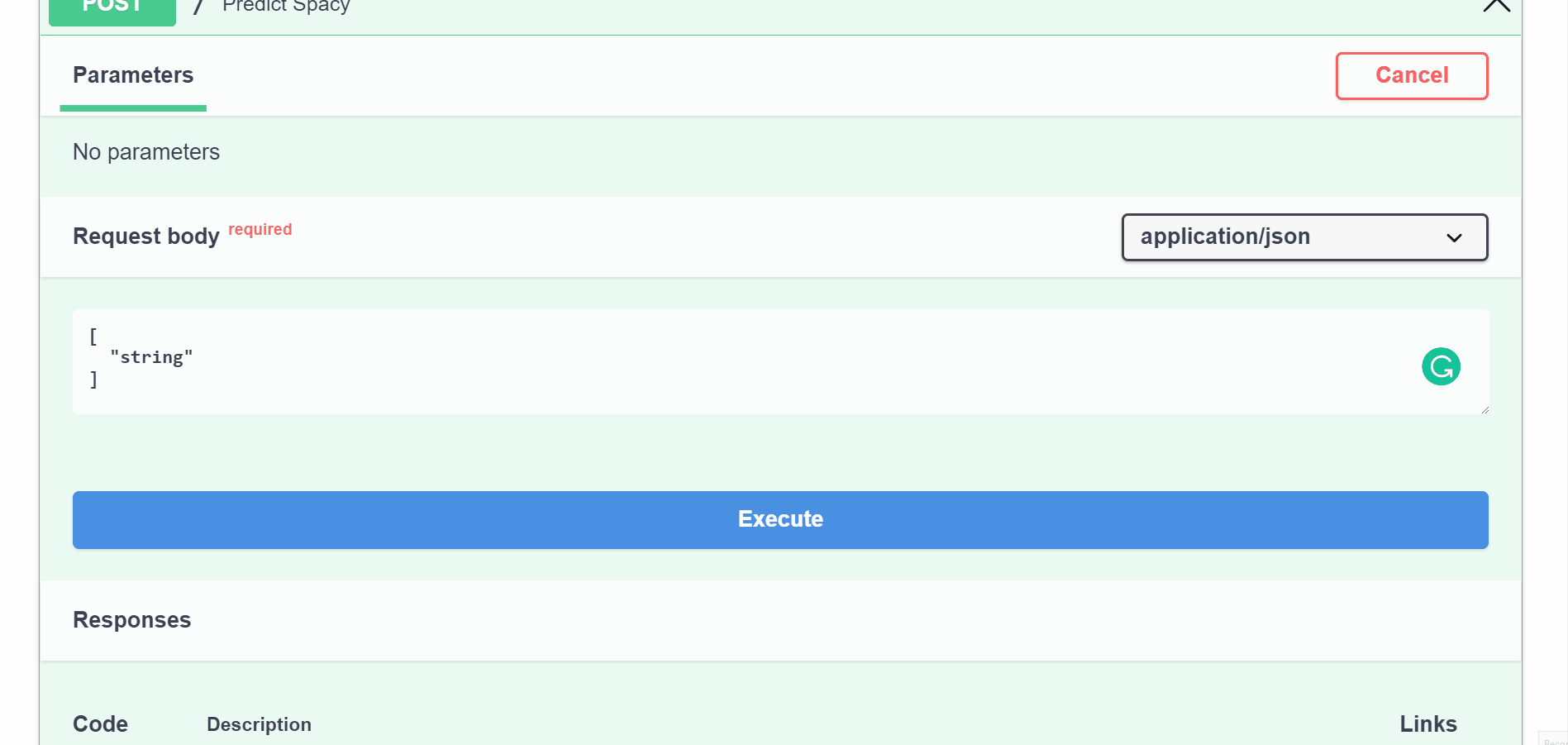💾 Monitor predictions in HTTP API endpoints¶
In this tutorial, you’ll learn to monitor the predictions of a FastAPI inference endpoint and log model predictions in a Rubrix dataset.
This tutorial walks you through 4 basic steps:
💾 Load the model you want to use.
🔄 Convert model output to Rubrix format.
💻 Create a FastAPI endpoint.
🤖 Add middleware to automate logging to Rubrix
Let’s get started!


Setup Rubrix¶
Rubrix, is a free and open-source tool to explore, annotate, and monitor data for NLP projects.
If you are new to Rubrix, check out the ⭐ Github repository.
If you have not installed and launched Rubrix, check the Setup and Installation guide.
Once installed, you only need to import Rubrix:
Install tutorial dependencies¶
Apart from Rubrix, we’ll need the following libraries: - transformers - spaCy - uvicorn - FastAPI
And the following models: - distilbert-base-uncased-finetuned-sst-2-english : a sentiment-analysis model - en_core_web_sm : spaCy’s trained pipeline for English
To install all requirements, run the following commands :
[ ]:
# spaCy
!pip install spacy
# spaCy pipeline
!python -m spacy download en_core_web_sm
# FastAPI
!pip install fastapi
# transformers
!pip install transformers
# uvicorn
!pip install uvicorn[standard]
The transformer’s pipeline will be downloaded in the next step.
Loading models¶
Let’s get and load our model pretrained pipeline and apply it to one of our dataset records:
[ ]:
from transformers import pipeline
import spacy
transformers_pipeline = pipeline("sentiment-analysis", return_all_scores=True)
spacy_pipeline = spacy.load("en_core_web_sm")
For more informations about using the transformers library with Rubrix, check the tutorial How to label your data and fine-tune a 🤗 sentiment classifier
Model output¶
Let’s try the transformer’s pipeline in this example:
[ ]:
from pprint import pprint
batch = ['I really like rubrix!']
predictions = transformers_pipeline(batch)
pprint(predictions)
Looks like the predictions is a list containing lists of two elements : - The first dictionnary containing the NEGATIVE sentiment label and its score. - The second dictionnary containing the same data but for POSITIVE sentiment.
Convert output to Rubrix format¶
To log the output to rubrix we should supply a list of dictionnaries, each dictonnary containing two keys: - labels : value is a list of strings, each string being the label of the sentiment. - scores : value is a list of floats, each float being the probability of the sentiment.
[ ]:
rubrix_format = [
{
"labels": [p["label"] for p in prediction],
"scores": [p["score"] for p in prediction],
}
for prediction in predictions
]
pprint(rubrix_format)
Create prediction endpoint¶
[ ]:
from fastapi import FastAPI
from typing import List
app_transformers = FastAPI()
# prediction endpoint using transformers pipeline
@app_transformers.post("/")
def predict_transformers(batch: List[str]):
predictions = transformers_pipeline(batch)
return [
{
"labels": [p["label"] for p in prediction],
"scores": [p["score"] for p in prediction],
}
for prediction in predictions
]
Add Rubrix logging middleware to the application¶
[ ]:
from rubrix.client.asgi import RubrixLogHTTPMiddleware
app_transformers.add_middleware(
RubrixLogHTTPMiddleware,
api_endpoint="/transformers/", #the endpoint that will be logged
dataset="monitoring_transformers", #your dataset name
# you could post-process the predict output with a custom record_mapper function
# record_mapper=custom_text_classification_mapper,
)
Do the same for spaCy¶
We’ll add a custom mapper to convert spaCy’s output to TokenClassificationRecord format
Mapper¶
[ ]:
import re
import datetime
from rubrix.client.models import TokenClassificationRecord
def custom_mapper(inputs, outputs):
spaces_regex = re.compile(r"\s+")
text = inputs
return TokenClassificationRecord(
text=text,
tokens=spaces_regex.split(text),
prediction=[
(entity["label"], entity["start"], entity["end"])
for entity in (
outputs.get("entities") if isinstance(outputs, dict) else outputs
)
],
event_timestamp=datetime.datetime.now(),
)
FastAPI application¶
[ ]:
app_spacy = FastAPI()
app_spacy.add_middleware(
RubrixLogHTTPMiddleware,
api_endpoint="/spacy/",
dataset="monitoring_spacy",
records_mapper=custom_mapper
)
# prediction endpoint using spacy pipeline
@app_spacy.post("/")
def predict_spacy(batch: List[str]):
predictions = []
for text in batch:
doc = spacy_pipeline(text) # spaCy Doc creation
# Entity annotations
entities = [
{"label": ent.label_, "start": ent.start_char, "end": ent.end_char}
for ent in doc.ents
]
prediction = {
"text": text,
"entities": entities,
}
predictions.append(prediction)
return predictions
Putting it all together¶
[ ]:
app = FastAPI()
@app.get("/")
def root():
return {"message": "alive"}
app.mount("/transformers", app_transformers)
app.mount("/spacy", app_spacy)
Launch the appplication¶
To launch the application, copy the whole code into a file named main.py and run the following command:
[ ]:
!uvicorn main:app
Transformers demo¶

spaCy demo¶

Summary¶
In this tutorial, we have learnt to automatically log model outputs into Rubrix, this can be used to continuosly and transparently monitor HTTP inference endpoints.